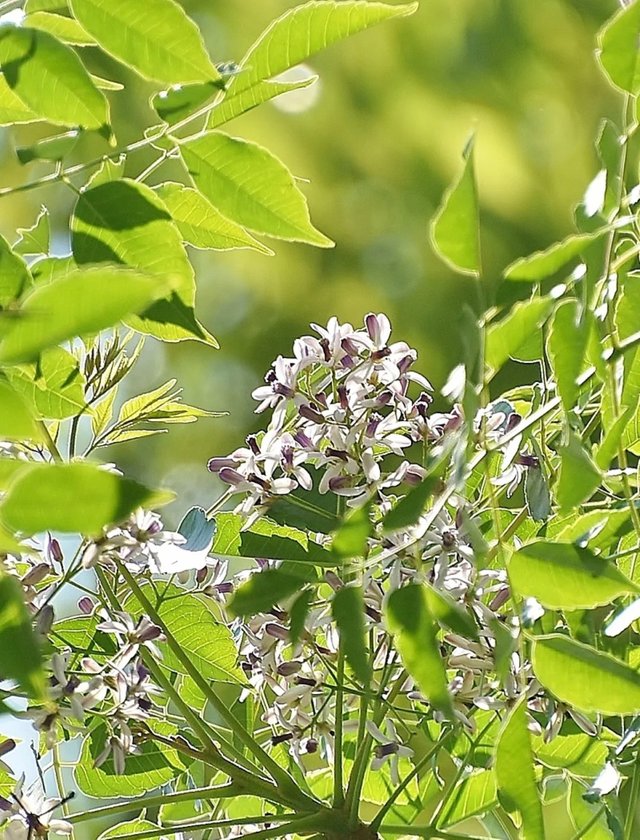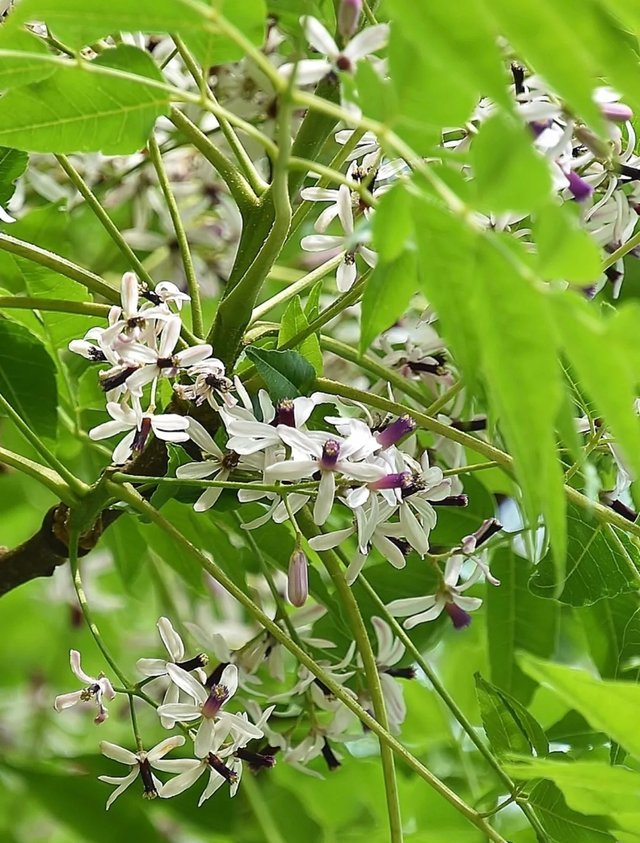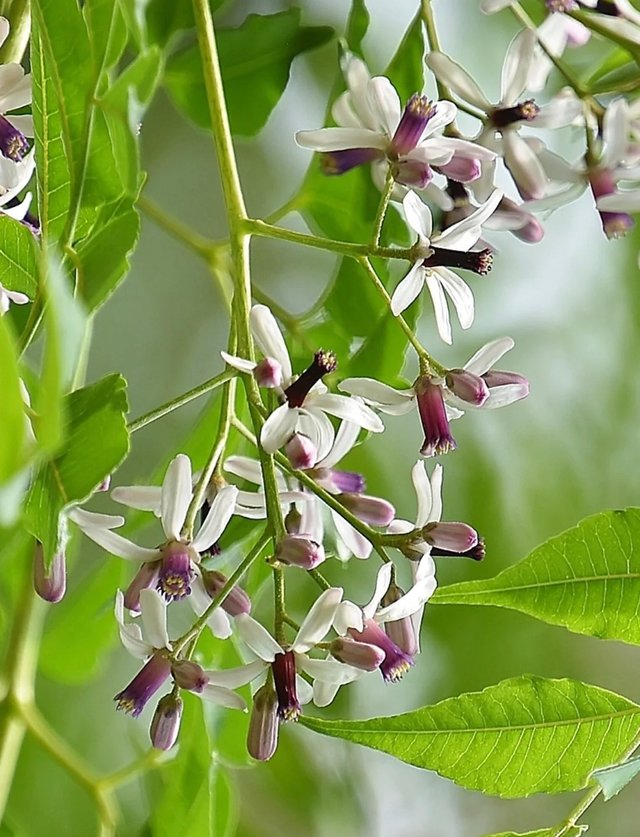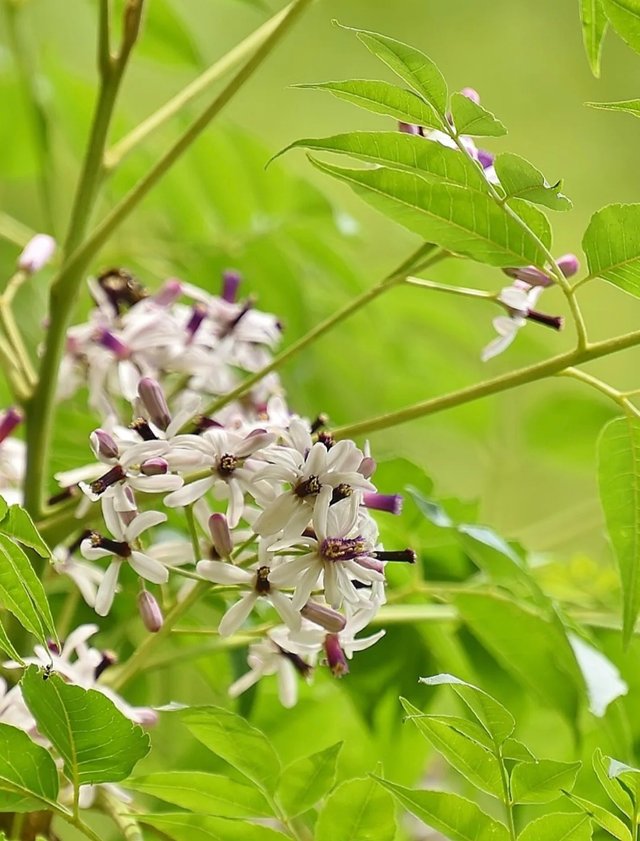Chinaberry Flower
The Chinaberry tree may not be as globally celebrated as cherry blossoms or roses, but its flower holds a quiet and fragrant beauty that captivates anyone who takes the time to notice. Native to South Asia and Australia and widely naturalized across warm climates worldwide, the Chinaberry tree is often found lining roads, populating old gardens, and reclaiming neglected patches of earth. Its flowers, while small and delicate, carry stories of resilience, transformation, and subtle charm.
In late spring to early summer, the tree produces clusters of lilac to pale violet star-shaped flowers. Each flower consists of five or more narrow petals radiating from a deep purple center, where the stamens are fused into a dark-colored tube—a unique characteristic of this species.The blooms are small, typically measuring about 1–2 cm across, but they cluster in such profusion that they often give the entire tree a soft, pastel-hued crown. Their scent is sweet and mildly spicy, attracting bees, butterflies, and sometimes curious humans drawn in by the tree’s floral fragrance.
In some cultures, the Chinaberry flower has come to symbolize humble beauty—something that doesn’t clamor for attention but reveals its splendor to those willing to pause and look closer. Unlike cherry blossoms, which bloom dramatically and fall quickly, Chinaberry flowers linger and blend into the greenery, marking a slower, quieter transition between spring and summer.In rural parts of Asia and the Southern United States, where the Chinaberry tree has become widespread, it is often remembered as a tree of childhood. Many people recall climbing its branches, watching the flowers fall like pale purple snow, or smelling its sweet air as a sign that the school year was ending and summer was near.




